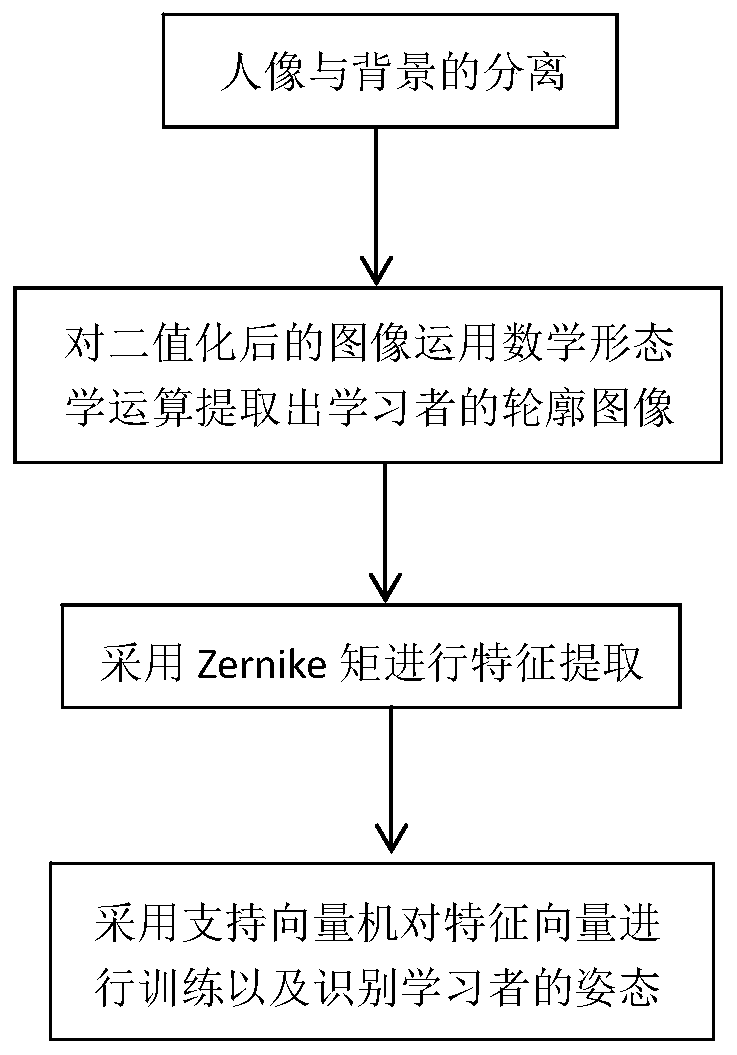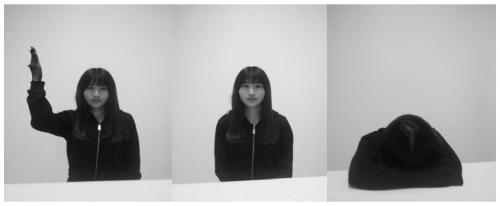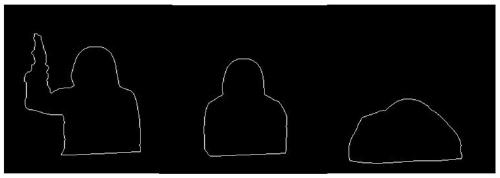Learner Pose Recognition Method
A recognition method, a learner's technology, applied in character and pattern recognition, biological models, instruments, etc., which can solve the problems of information redundancy and inability to fully extract information.
- Summary
- Abstract
- Description
- Claims
- Application Information
AI Technical Summary
Problems solved by technology
Method used
Image
Examples
Embodiment 1
[0092] Taking the postures of the learner raising his hand, sitting upright, and bowing his head as examples, the steps of the learner posture recognition method are as follows:
[0093] (1) Separation of portrait and background
[0094] The bee colony algorithm that introduces Levi's flight and dynamic weights optimizes the normalized cut, segments the learner's pose image, obtains the binary image of the original image, and realizes the separation of the portrait from the background. The steps are as follows:
[0095] 1) Perform fuzzy C-means clustering preprocessing on the red, green, and blue color channels of the color image respectively, and divide the image into n blocks of maximum similarity areas. In this embodiment, n is 14, and each area is selected on the three color channels The average value of the gray value represents the pixel value of this area, and the undirected weighted graph G=(V, E) is constructed with the pixel values of all areas, V is a vertex in th...
Embodiment 2
[0161] Taking the postures of the learner raising his hand, sitting upright, and bowing his head as examples, the steps of the learner posture recognition method are as follows:
[0162] (1) Separation of portrait and background
[0163] The bee colony algorithm that introduces Levi's flight and dynamic weights optimizes the normalized cut, segments the learner's pose image, obtains the binary image of the original image, and realizes the separation of the portrait from the background. The steps are as follows:
[0164] 1) Perform fuzzy C-means clustering preprocessing on the three color channels of red, green, and blue respectively, divide the image into n blocks of maximum similarity areas, n is 6, and take the gray value of each area on the three color channels The average value of represents the pixel value of this area, and the undirected weighted graph G=(V,E) is constructed with the pixel values of all areas, V is a vertex in the graph, and E is an edge connecting two...
Embodiment 3
[0193] Taking the postures of the learner raising his hand, sitting upright, and bowing his head as examples, the steps of the learner posture recognition method are as follows:
[0194] (2) Separation of portrait and background
[0195] The bee colony algorithm that introduces Levi's flight and dynamic weights optimizes the normalized cut, segments the learner's pose image, obtains the binary image of the original image, and realizes the separation of the portrait from the background. The steps are as follows:
[0196] 1) Perform fuzzy C-means clustering preprocessing on the red, green, and blue color channels of the color image respectively, divide the image into n blocks of maximum similarity areas, n is 20, and take the gray value of each area on the three color channels The average value of represents the pixel value of this area, and the undirected weighted graph G=(V,E) is constructed with the pixel values of all areas, V is a vertex in the graph, and E is an edge con...
PUM
 Login to View More
Login to View More Abstract
Description
Claims
Application Information
 Login to View More
Login to View More - R&D
- Intellectual Property
- Life Sciences
- Materials
- Tech Scout
- Unparalleled Data Quality
- Higher Quality Content
- 60% Fewer Hallucinations
Browse by: Latest US Patents, China's latest patents, Technical Efficacy Thesaurus, Application Domain, Technology Topic, Popular Technical Reports.
© 2025 PatSnap. All rights reserved.Legal|Privacy policy|Modern Slavery Act Transparency Statement|Sitemap|About US| Contact US: help@patsnap.com



